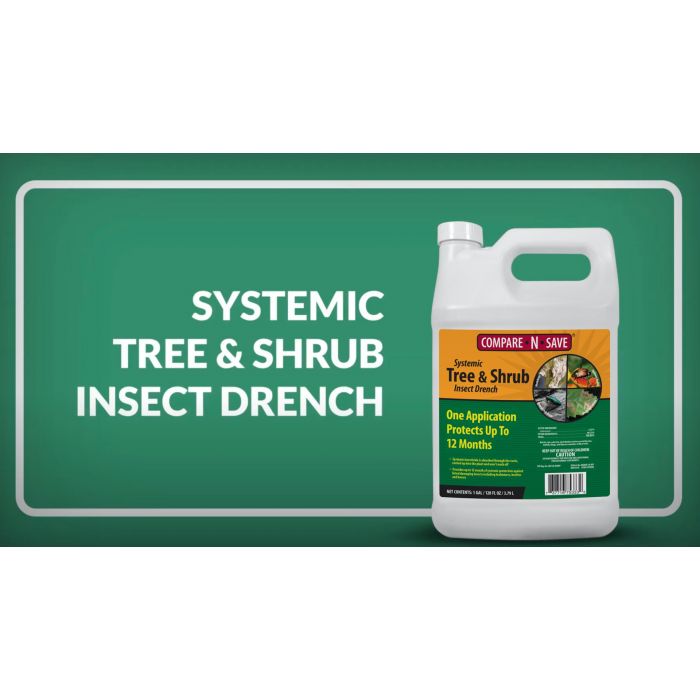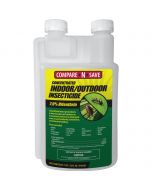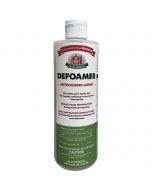Systemic Tree and Shrub Insect Drench
DISCONTINUED - 20% OFF WHILE SUPPLIES LAST
Year-Long Protection From Harmful Insects
You work hard to keep your trees and shrubs healthy and strong. But harmful insects like adelgids, aphids, lantern flies, emerald ash borers and Japanese beetles have other ideas. Luckily, this powerful insect-control solution can give your plants the long-lasting protection they need.
One easy application of Systemic Tree & Shrub Insect Drench with 1.47 percent imidacloprid protects plants for 12 months, and the solution is absorbed through the roots, so protection won’t wash off due to rain or regular watering.
Mode of action
The insecticide dissolved in water moves down through the soil, where it is absorbed by the roots. Once absorbed, it moves up through the tree or shrub providing year-long insect protection. This product even moves into new growth after application, thus protecting it, too! To get complete protection, the insecticide must distribute completely through the tree/shrub.
Depending on the size and health of the plant, this may take one week to three months (for very large trees). Rain or water cannot wash off this internal protection.
Where to use:
For use on outdoor trees and shrubs, including listed fruit and nut trees:
| Apple | Oriental pear | Crabapple | Pear |
| Loquat | Pecan | Mayhaw | Quince |
DO NOT apply this product, by any application method, to linden, basswood or other Tilia species.
Species Controlled
| Adelgids | Aphids |
| Vine weevil larvae (including black vine weevil) | Thrips |
| Japanese beetles (adult) | Lacebugs |
| Lantern flies | Sawfly larvae |
| Leafhoppers (including glassy-winged sharpshooter) | Leafminers (including birch leafminers) |
| Mealybugs | Pine tip moth larvae |
| Psyllids | Royal palm bugs |
| Leaf beetles (including elm leaf beetles and viburnum leaf beetles) | Scales (including armored scale [suppression] and soft scale) |
| Borers: Roundheaded borers (including Asian longhorned beetle and eucalyptus longhorned borer) and Flatheaded (including bronze birch alder and emerald ash borers) | Whiteflies |
When to use:
For best results, use this product as part of an overall tree and shrub health care program before problems start. This product can be applied anytime except when the ground is waterlogged or frozen. These conditions inhibit the movement of the product down into the root zone. During prolonged dry periods (spells), water the tree/shrub well the night before applying.
For severe infestations, treat with a foliar insect control solution such as Menace 2.4% ME, then use this product as part of a routine care program.
How to use:
Determine the amount of product needed according to directions for trees or shrubs. Pour the required amount into a bucket of water and empty the bucket around the base of the tree/shrub SLOWLY, taking about 60 seconds to empty the bucket to treat an average tree (12-inch round trunk) or shrub (4 feet tall).
Application to Trees
Rate: 1 ounce per inch of distance around trunk.
Tree with 1 trunk:
- Measure distance (in inches) around tree trunk at chest height (a flexible tape measure is recommended).
- This is the number of ounces of this product to apply.
Tree with 2 or more trunks.
- Measure distance (in inches) around each tree trunk and add together.
- Multiply this total by 0.75 to get the required number of ounces of this product to apply.
Example: A tree has 4 trunks. They measure 20, 10, 5 and 5 (inches) or a total of 40 inches. 40 x 0.75 = 30 ounces.
Application to Shrubs
RATE: 3 ounces per foot of height.
- Measure the height of the shrub to the nearest foot.
- Multiply the number of feet by 3. This will be the number of ounces of this product to apply.
How to Apply Systemic Tree & Shrub Insect Drench
- Fill a bucket or watering can with 1 gallon of water. For large trees with circumference greater than 50 inches, use 2 gallons of water.
- Shake bottle well.
- Carefully measure required amount of product into bucket.
- Slowly pour the solution evenly around the tree. For best results, pour as close to the trunk/main stem of the tree/ shrub as possible.
- Fill the bucket with clean water and pour it around the trunk as well.
Precautions:
People & Pets: People and pets may re-enter treated areas after spray has dried.
DO NOT allow this product to contact plants in bloom if bees are foraging in the treatment area.
Application to heavily infested trees may not prevent their eventual loss due to existing pest damage and tree stress.
Active Ingredients:
| Imidaclorprid | 1.47% |
| Other Ingredients | 98.53% |
| Total: | 100.00% |
Product Label:
Disclaimer:
It is a violation of Federal law to use this product in a manner inconsistent with its labeling. Read the entire label before each use. Use only according to label instructions.
See the complete label for specific use rates and detailed instructions.
Consult the Safety Data Sheet (SDS) for important safety information.



